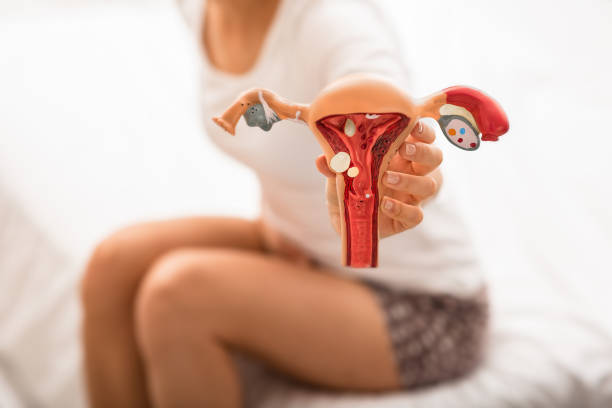
Are you experiencing menstrual pain that's far worse than usual? Is it painful especially while on periods? It is then advisable that you get diagnosed to rule out the possibility of endometriosis.
What is endometriosis?
Endometriosis is a painful disorder in which endometrial tissue grows outside your uterus. The condition of endometriosis involves your ovaries, fallopian tubes, and the tissue lining your pelvis. In rare cases, endometrial-like tissue may be found beyond the area where pelvic organs are located.
In a patient with endometriosis, the endometrial-like tissue acts as endometrial tissue thickens, breaks down, and bleeds with each menstrual cycle. But since this tissue has no way to exit your body, it gets trapped. When endometriosis involves the ovaries, cysts called endometriomas gets formed making the surrounding tissue irritated, and eventually developing scar tissue and adhesions causing pelvic tissues and organs to stick to each other.
Symptoms
The primary symptom is pelvic pain, though it's often associated with menstrual periods. Those with endometriosis typically describe menstrual pain that's far worse than usual and that increases over time.
The common signs include:
- Painful periods where pelvic pain and cramping begin before and extend to several days. This may also be accompanied by lower back and abdominal pain.
- Pain with intercourse. Pain during or after sex is a common sign of endometriosis.
- Pain with bowel movements or urination especially during a menstrual period.
- Excessive bleeding. Occasional heavy menstrual periods or bleeding between periods.
- Infertility. Sometimes, endometriosis is first diagnosed in those seeking treatment for infertility.
- Fatigue, diarrhoea, constipation, bloating, or nausea, especially during menstrual periods are the other signs.
Significance of diagnosis for endometriosis
Endometriosis can be mistaken for other conditions that cause pelvic pain, such as pelvic inflammatory disease, or ovarian cysts. It is sometimes also confused with irritable bowel syndrome.
A timely diagnosis, not only enables early treatment but also helps to rule out the presence of other conditions such as pelvic inflammatory disease, ovarian cyst, or irritable bowel syndrome, which are commonly mistaken with endometriosis pain.
Tests to check for physical clues of endometriosis include:
-
Pelvic exam
A pelvic exam helps to look for abnormalities, such as cysts on your reproductive organs or scars behind your uterus.
-
CA125 Blood Test
This is a blood test that checks levels of a blood protein known as CA125, which is a tumour marker for certain gynaecological cancers. This blood test is also used to detect a specific protein found in the blood of women who have endometriosis.
-
Ultrasound
The use of high-frequency sound waves creates images of the inside of your body giving the best view of the reproductive organs. A standard ultrasound imaging test will definitively tell whether you have endometriosis.Magnetic resonance imaging (MRI)
An MRI exam creates detailed images of the organs and tissues within your body and gives detailed information about the location and size of endometrial implants.
-
Laparoscopy
A procedure that allows the surgeon to view inside your abdomen to look for signs of endometrial tissue outside the uterus.
-
Biopsy
The gold standard method for confirmation where endometrial tissue is observed in the biopsy specimen
Risk factors associated with endometriosis
Several factors can place you at greater risk of developing endometriosis, such as:
- Starting your period at an early age
- Short menstrual cycles — for instance, less than 27 days
- Heavy menstrual periods that last longer than seven days
- Having higher levels of estrogen in your body or a greater lifetime exposure to estrogen your body produces
- Low body mass index
- Never giving birth
- Going through menopause at an older age
- One or more relatives (mother, aunt, or sister) with endometriosis
- Any medical condition that prevents the passage of blood from the body during menstrual periods
- Disorders of the reproductive tract
Take Note
Chances of endometriosis usually develop several years after the onset of menstruation and its signs and symptoms may temporarily improve with pregnancy and may go away completely with menopause unless you're taking estrogen. Endometriosis can cause severe pain. Do not confuse endometriosis with normal period pain. Address the pain and choose to get diagnosed. Fortunately, effective treatments are available. Pay attention to the signs and get diagnosed to rule out the possibility of endometriosis.

